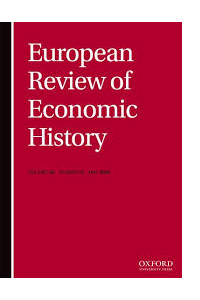Cooperatively owned Raiffeisen banks first emerged in the Netherlands in the late 1890s and spread rapidly across the country. Using a new dataset, we investigate the determinants of their market entry and early performance. We find the cooperative organisational form, when allied to a change in the structure of Dutch agriculture and the socioreligious pillarisation of Dutch society, was an important factor explaining their entry into rural financial markets. While religious organisations provided a necessary impetus for the emergence of Raiffeisen banks, the economic advantages associated with cooperative enterprises ensured the subsequent survival and success of these banks.
Article available in open access via this link




